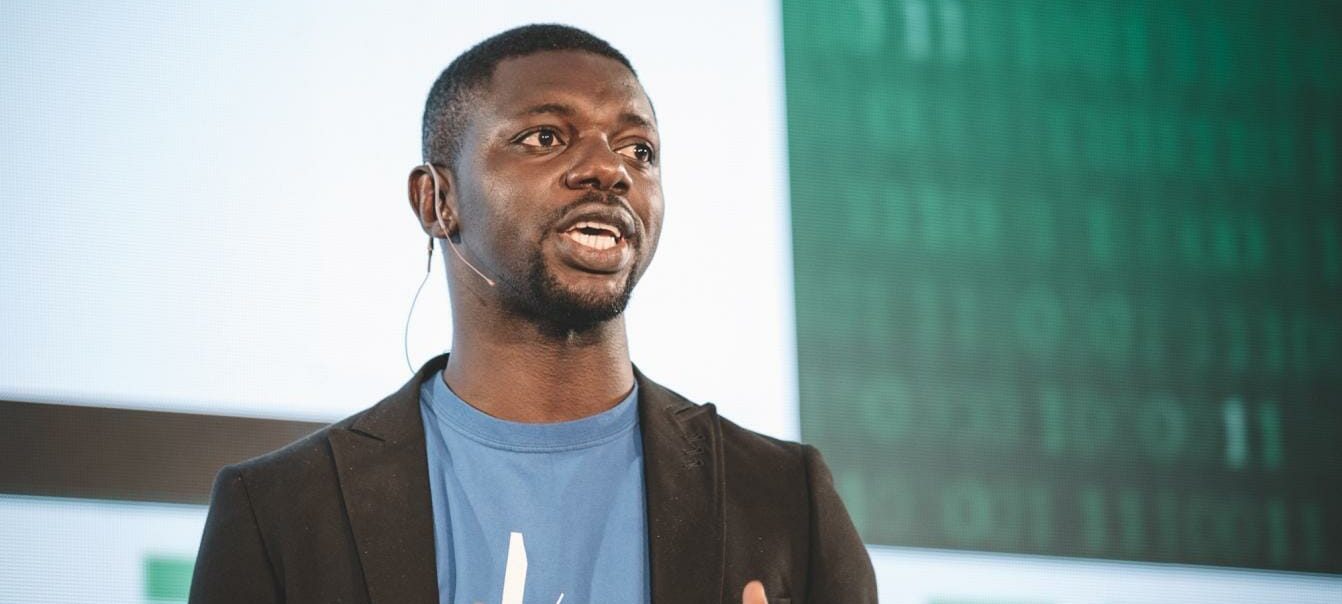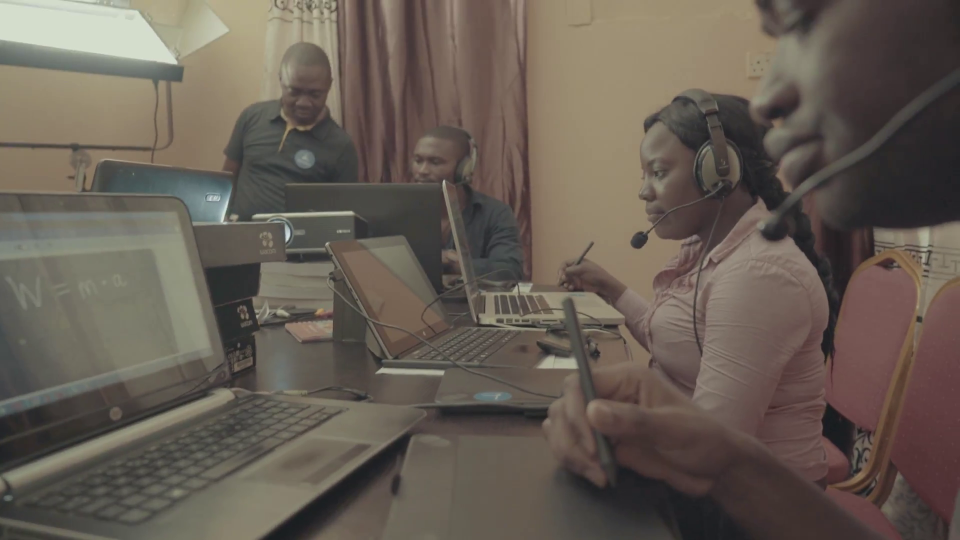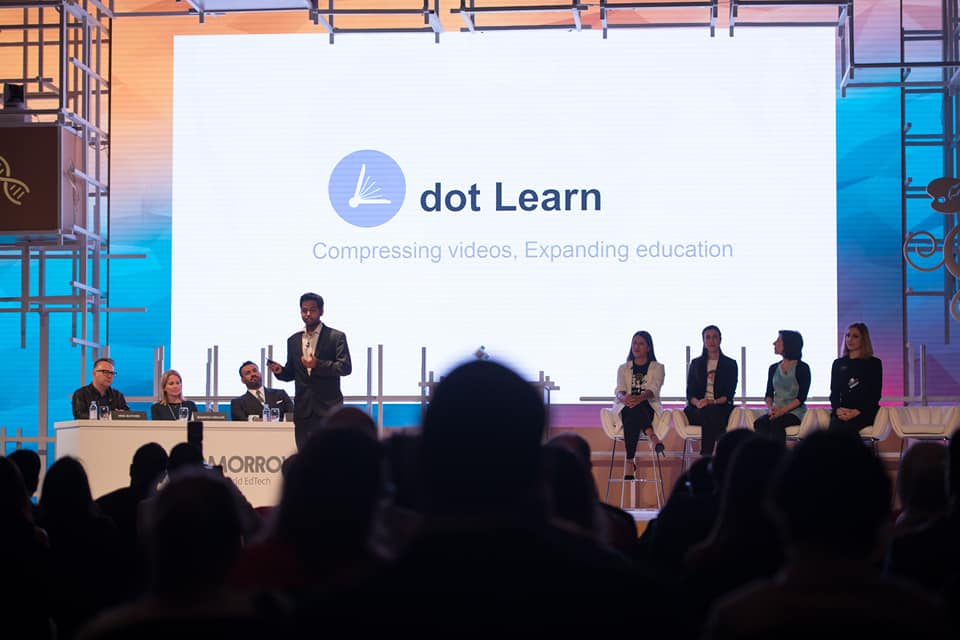
Articles
Editor’s Picks
How Lagos Startup dot Learn Helps EdTech Providers Get Around Mobile Infrastructure Issues
By Henry Kronk
May 16, 2018
There are many diverse players in the edtech landscape. They hope to expand access to education, democratize it, disrupt the classroom, flip it, blend it, open it, personalize it. All these might be understood as strategies to accomplish a similar goal. They seek to make an impact on the education process so that more students can learn in a more effective manner. But in Lagos, Nigeria, one edtech startup isn’t trying to reinvent pedagogy. One might say they deal with big data, so to speak, but they’re trying to make it smaller. The team at dot Learn have one primary wrench in their tool box: a compression algorithm.
This is the first article in a series on the burgeoning edtech scene in West Africa.
When co-founder and COO Tunde Alawode was a student in Lagos, there was only one library in the city of over 20 million that offered public WiFi. Sam Bhattacharyya—who met Alawode at MIT—faced similar issues while serving in the Peace Corps in rural Mexico. He was there to teach math and science.
“I had tried to use Kahn Academy and things like that with the students I’d been teaching,” Bhattacharyya said. “While that certainly would have been possible for most people in the US, most of my students didn’t have internet or the devices to watch the videos. That kind of frustrated me, which got me starting to think about this problem.”
dot Learn’s Work Around
The two created an algorithm that could reduce a video file to 1/60 its original size while also improving the quality. It’s optimized to make educational content accessible via a 2G mobile connection. dot Learn has won several awards and competitions. In March, they colleted The Varkey Foundation’s Next Billion edtech prize.

Alawode and Bhattacharyya initially envisioned creating an education platform with their own content, optimized for learners in areas with poor or expensive internet connection. “We realized how difficult it was to scale an online education platform in West Africa,” Bhattacharyya said. “We realized we might as well just double down on our technology and work with other people who already have user bases in sub-Saharan Africa, or South Asia, or other parts of the developing world.”
“So we pivoted to more of a peer-to-peer technology, helping other tech companies in the developing world, make their videos data-light by using our direct-to-base technology, sometime around last year. So that’s essentially what we’re doing right now, we partner with ed tech companies in the developing world to help them make their online video offerings much more data-light so they can reach more users and their users are more happy and they can get more growth and all of that good stuff.”
Because of the differences in ICT infrastructure between the developed and the developing world, the edtech sector in each must must optimize for different conditions.
“There’s a huge disconnect between the way that people think about the internet in say the US or Europe and the way that people think about it in many parts of the developing world,” Bhattacharyya said. “For many people in the US, myself included, the internet was something that you connected to first on a computer that was connected to a dial-up modem, and then a laptop connected to a fixed broadband connection, whether it was fiber-optic or like a cable modem or whatever. When you consider the idea of learning online, the idea of taking your laptop, sitting in your living room, or whatever, sitting on the couch, getting a cup of coffee, and taking coding tutorials about marketing, or learning about 19th century art via an online course, that seems totally normal. But when you consider how people connect to the internet in the developing world, it’s quite different.”
“The first wave of online education was never really designed for the way that most people actually connect to the Internet in the developing world, which is why most ed tech companies that operate in the developing world have focused on mobile and other things like that. Imagine a sixteen-year-old kid who has a cheap Android smartphone, who bought it from some street seller or one of those market stalls—that’s their primary source of connection to the Internet.”
“These are very cost-sensitive people. To give an example, a lot of the phones that you could buy in India, or say in a country like Nigeria, come with multiple SIM cards, because the phones that they buy are designed for people who want to put multiple SIM cards, so that they can connect to the mobile provider that’s offering the cheapest rates at any given time. So sometimes one network will provide a promotion on data or minutes or whatever on the weekends, and another provider might have free minutes or something, so that’s how cost-sensitive these people are, and for a lot of users, the Internet is Facebook or What’sApp, that’s what they think the Internet is. And Facebook and What’sApp and Google, they’re not really aware that the Internet is a much broader ecosystem than that. Forget about laptops, forget about all of those other things. There are definitely people with laptops in Nigeria and India, but we’re talking about wealthy, upper middle-class people versus the average Nigerian or the average Indian.”
According to Bhaccaryya, connectivity issues are improving, but there’s still a long way to go.
Connectivity Will Still Be an Issue for Some Time
“I think it’s a two-pronged thing. One is that the costs are going down and they have been going down. What most people fail to realize, though, is that they’re not going down substantially as quickly as you would think. Even I’m skeptical sometimes about whether one day in ten years or five years, data’s not going to be an issue, but even if I think about it that way, I ask my own employees, my co-founder, and everyone else who has been living and working in Nigeria, they emphatically say, “Why do you think that? I’m 100% certain that data will still be an issue in five, ten years.” Even from ten years ago till today, people have had Internet, but it hasn’t gotten cheap enough, quickly enough.”

“The prices of data seem to go down about 50% every three to four years, but if you talk for example about a place like Kenya, where an hour of video still costs something like two or three dollars to stream, then you’d have to wait ten to fifteen years before people stop really thinking about how expensive the data is. The question on one is, yes, prices are getting cheap, the question is, “How cheap?” or “How quickly will it get cheaper?” Based on our research with the IT use done with the telecommunications union, puts out a report every year talking about interconnectivity and data that we can look up, and it seems like it will be ten to fifteen years before data stops being an issue for most people.”
“And then the other bit is that if you actually look at the breakdown of 4G, 3G, and 2G in the developing world, or even 5G now, people have access to 4G, but that doesn’t mean that people necessarily use 4G. And even then, 3G use is still growing, and it will be growing until the mid-2020s. What a lot of people don’t realize is that around 46% of the world still isn’t even connected to the Internet, so there’s still a lot of growth in mobile Internet connectivity in the first place. So while people who already have Internet are moving 3G to 4G, or 4G to 5G, there’s still people who aren’t connected at all and they’re moving to 2G or to 3G. So that’s where a lot of the growth for a lot of these companies will come from in the future, especially in the developing world. If you look at a country like India, the first ed tech companies that have gotten successful now, that started about five years ago, have gotten successful pretty much from users in big, large cities, but that only accounts for like twenty to thirty percent of the population, and now the majority of their growth will have to come from second-tier or third-tier rural areas, where people still have only 2G or 3G connectivity. As more people get connected to the Internet, their possible market grows, and essentially what we do is we just speed up that process.”
dot Learn is currently working with numerous educators to make their content cheaper and more accessible.
“There’s a company in Indonesia with ten million monthly active users; they have Kahn Academy-style videos and right now a lot of their traffic is online, but most of it’s on mobile. Online data is still so expensive in Indonesia, to be fair it’s gotten cheaper in the last couple of years, but it’s still very expensive for a lot of people. So what they do is they sell USB sticks and CDs with their full catalogue library. So a student can order the high school package for math and he’ll get a CD in the mail, because that’s still cheaper than streaming all of those videos, which is kind of crazy when you think about it.”
“Another company is based in South Africa that’s doing the same thing; rather than CDs they sell SD cards, but it’s the same concept. They have high school math-level courses that help students prepare for the national exams, it’s kind of like a for-profit Kahn Academy. There’s another company that does MOOCs focused on universities. They help universities provide online courses to students in West Africa, so that students can take an online degree. Unfortunately, one of the big barriers to that is the video file size. Whenever a student signs up for a semester, they get mailed a USB stick full of videos to watch. It’s kind of online education, but not really. I hope that’s illustrative of the fact that there are companies that are doing this kind of stuff, they’re all kind of working around the data infrastructure problem in a lot of these places.”









No Comments